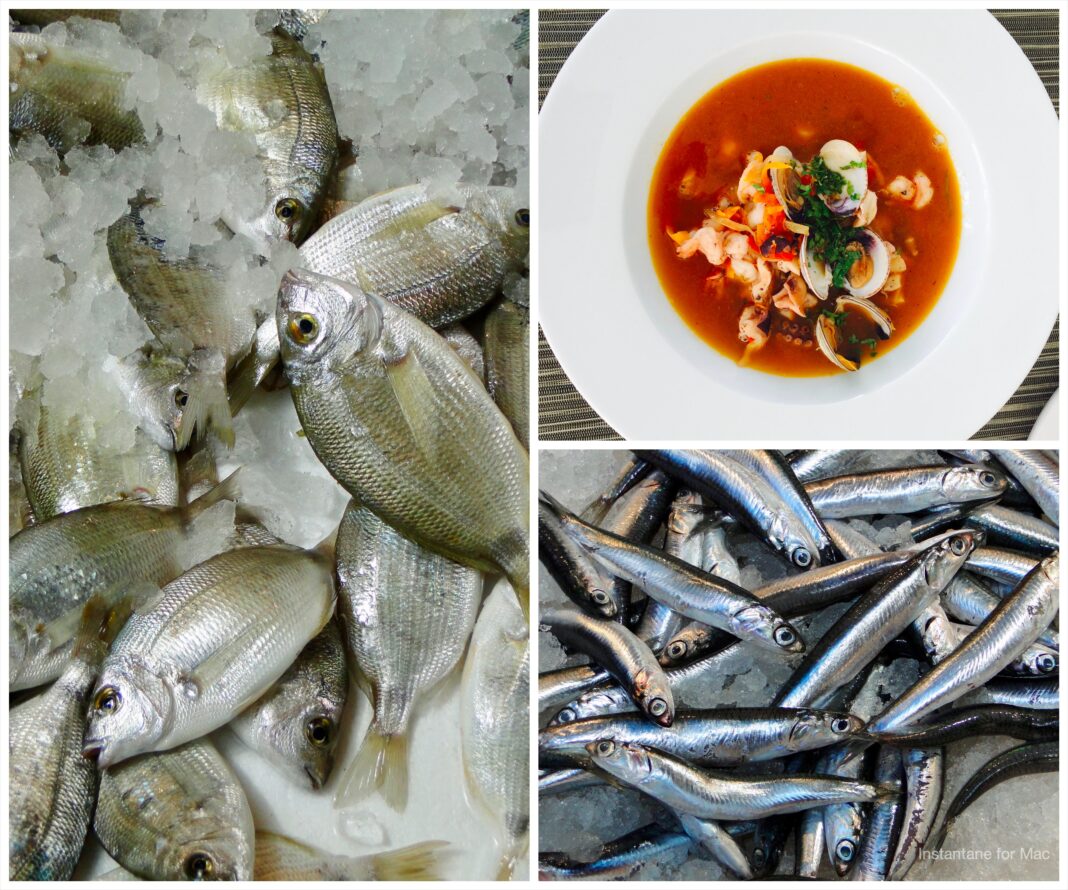The sea has fascinated imagination since the beginning of human time. The sea figures significantly in the belief systems of cultures. Perhaps part of its mystery is we always have to go to the sea; its life never voluntarily visits us. It’s a relationship in which we need them more than they.
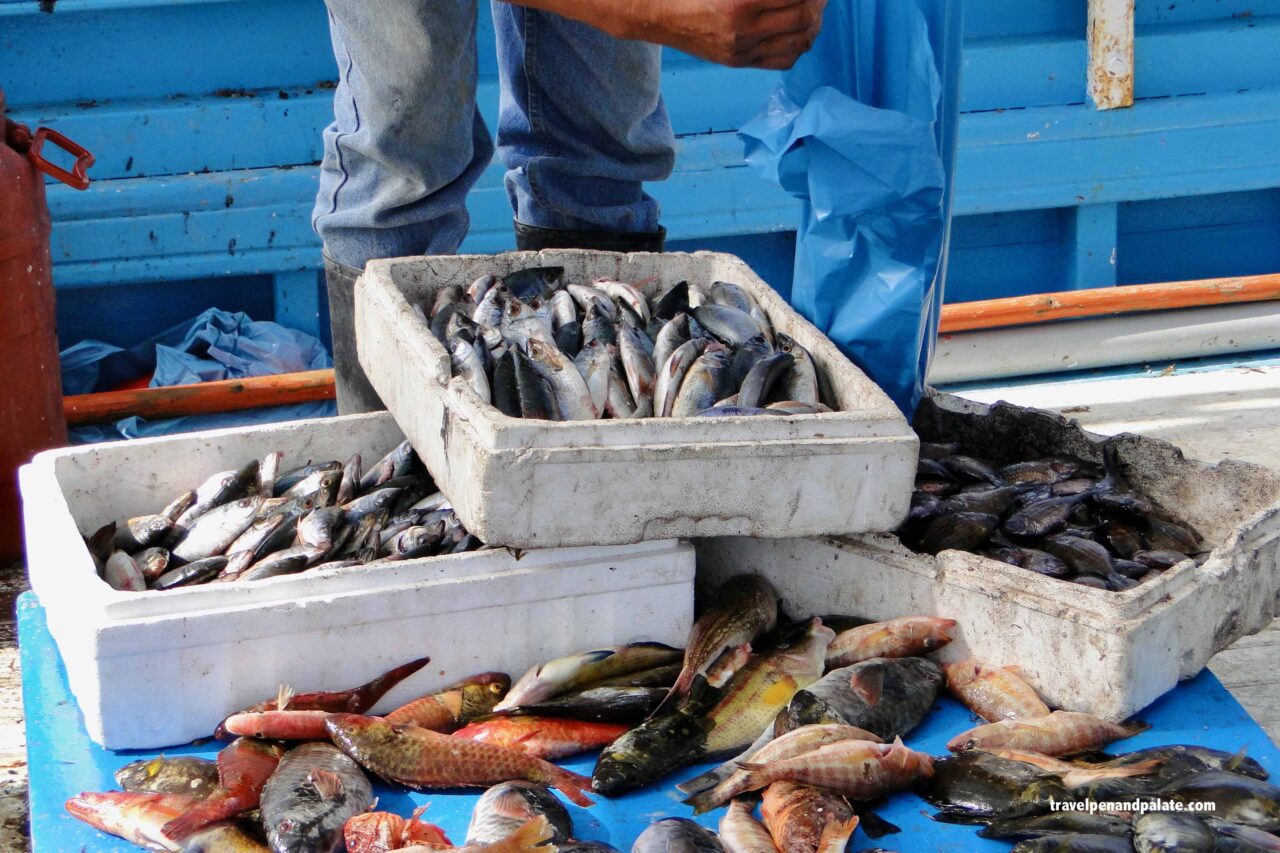
Seafood soups have been around for millenniums. Any human living on a sea coast had access to an abundance of shellfish, seafood and fish. No one knows the origin of seafood soups, chowders, bisques and other dishes that fit in among those, but recipes abound through time.
Once pottery was invented (c. 29,000 BCE) a cook could only imagine the possibilities. From then the average human for most of time ate soups or stews (the one-pot meal). It was a logical dish to prepare where it could slowly simmer over an open fire without needing constant attention.
Like a good wine, if the recipe is delicious, it’s usually first noticeable by aromas reaching the nose. The nose is able to discern major flavor components before food ever touches the mouth. Greece’s Thessaloniki, Spain’s Basque Country and Costa Rica’s Central Coast prove that the depth of flavors of the sea can be transformed into a dish to be savored.
Thessaloniki, Greece, Palati Restaurant
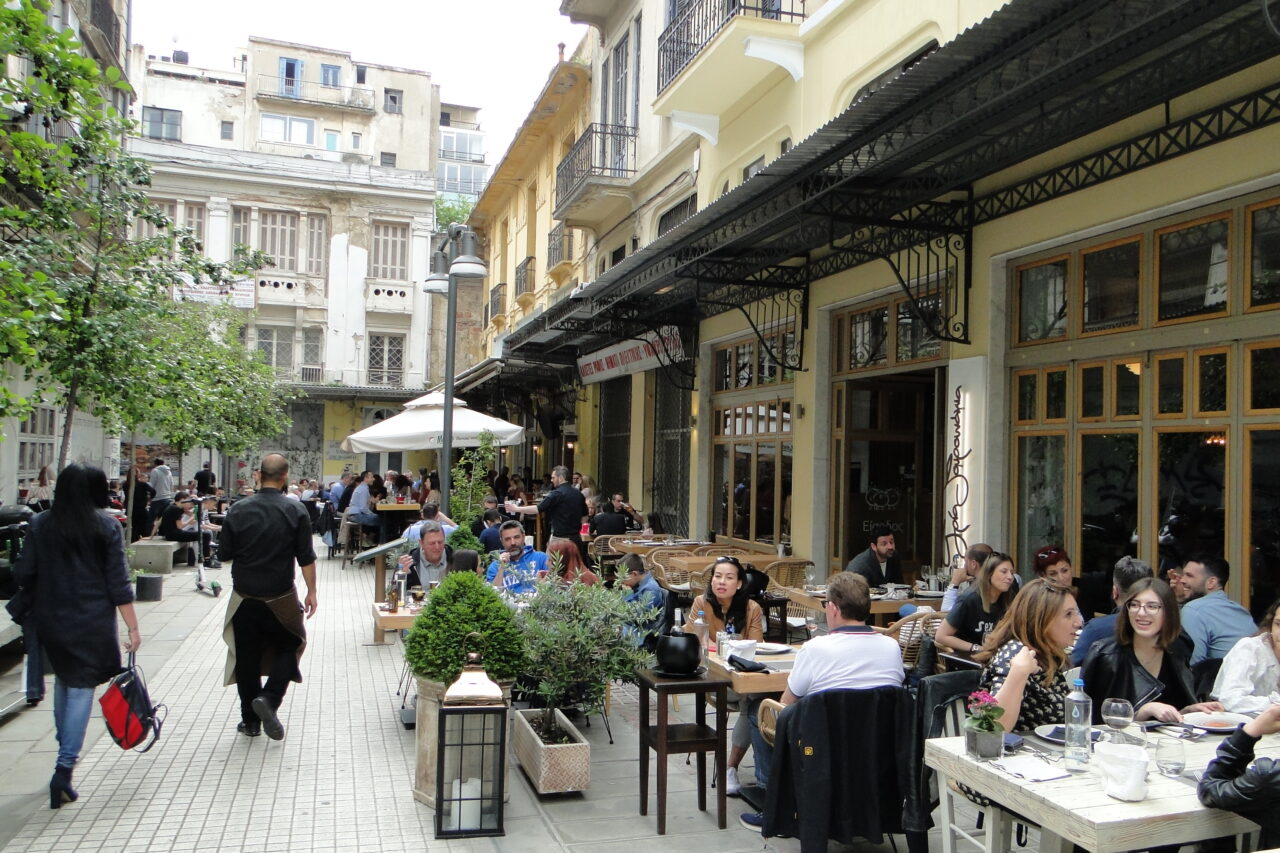
There are many cities heralded as “foodie” havens, but history continues to endow Thessaloniki with a stellar provenance as a culinary destination. The city is the largest in Macedonia, Greece’s second largest, the port city of the northern Aegean, gateway to the Balkans and commercially connected to Asia Minor for over 2,300 years.
Thessaloniki is known, among other things, as a city of cafes. The largest number of university students in the country, nearly 15 percent of the population, do help Thessaloniki’s cafes, restaurants and bars thrive. Off the waterfront in the narrow streets of Lower Town remains a charming warren of restaurants, markets and cafes. In the heart of the Ladadika, Palati Restaurant makes ageless traditional Spice Road dishes.
I’ve had the pleasure of enjoying Palati Restaurant hospitality more than once on my trips to Thessaloniki. Seafood soups (and saganakis) are a given in Greece and regions make their own variations of these popular dishes. Known in Thessaloniki as “Mydia Saganaki,” mussels in mustard sauce and feta captures sea and land.
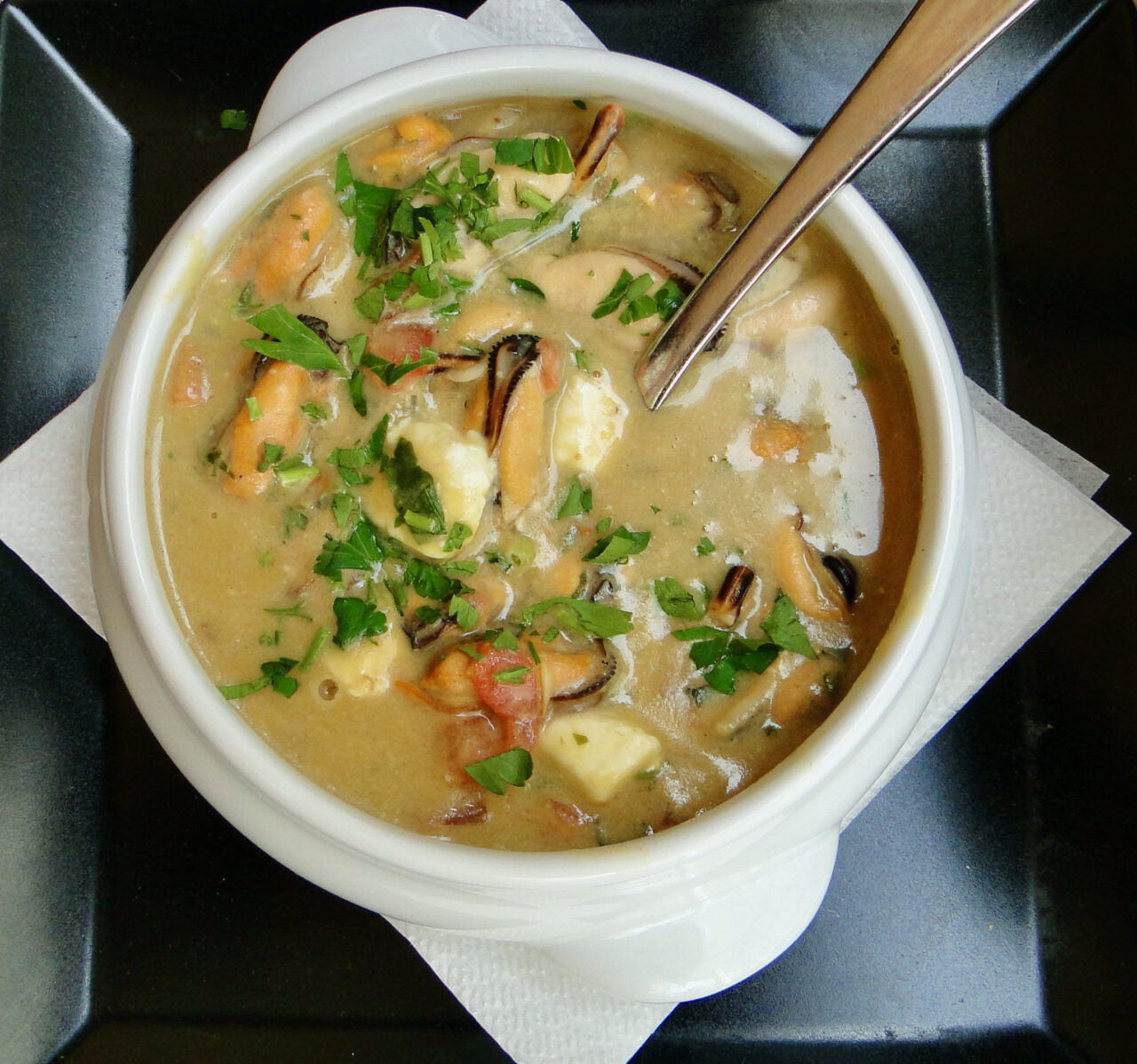
Mussels Saganaki with Mustard (Μυδια Σαγανακι με Μουσταρδα), Palati Restaurant, Thessaloniki, Greece
For 1 to 2 portions of MYDIA SAGANAKI:
Ingredients:
- Oil-lemon mix 300-500 ml (10 – 16 oz) (see note #1)
- 1 tablespoon dijon mustard
- 1 small glass (4 to 6 Tablespoons) – (sfinaki) tsipouro with anise (see note #2).
- 1 chopped chili pepper
- ½ tomato cut in small squares
- parsley (small bunch chopped)
- 200 gr (7 oz) Feta cheese
- Some flour (just enough to slightly thicken the sauce).
- 300 gr (11 oz) of mussel meat removed from the shell of approximately ___ of whole mussels. (Or seek them out already shelled in fish and seafood markets).
- Salt and pepper to taste
Preparation:
- Clean the mussels and remove the meat. (https://www.recipetips.com/kitchen-tips/t–1236/how-to-prepare-and-open-mussels.asp)
- Put a frying pan over medium heat and add the oil-lemon sauce, mustard, tsipouro, pepper, tomato, parsley, feta, flour, salt and pepper.
- Cook until smooth and bubbly (lover heat if necessary). Minutes before you serve the saganaki add the mussels and bring to a simmer for a few minutes – too much frying will shrink and toughen the mussels).
- Served at Palati Restaurant in a small double-handled frying pan.
Notes:
#1 Oil-Lemon Mix recipe: (Ladolemono Sauce) It’s best to make the sauce after you have everything else ready (mis en place) to prepare the saganaki. Makes 2 Cups (16 oz or 500 ml)
Ingredients for Ladolemono Sauce (Oil-Lemon Mix)
- 1 cup (8 oz or 250 ml) fresh lemon juice
- 2 tablespoons dijon mustard
- 1 to 2 tablespoons dried oregano
- 1 cup (8 oz or 250 ml) extra-virgin olive oil
- Kosher salt and freshly ground black pepper, to taste
Preparation
- Whisk together lemon juice, dijon mustard and oregano in a bowl, or in an electric stand mixer with the whip attachment. While whisking, slowly pour in oil and season with salt and pepper. Continue whisking until well emulsified.
#2 Ouzo with anise may be substituted for tsipouro with anise.
Inspired by the Basque Country
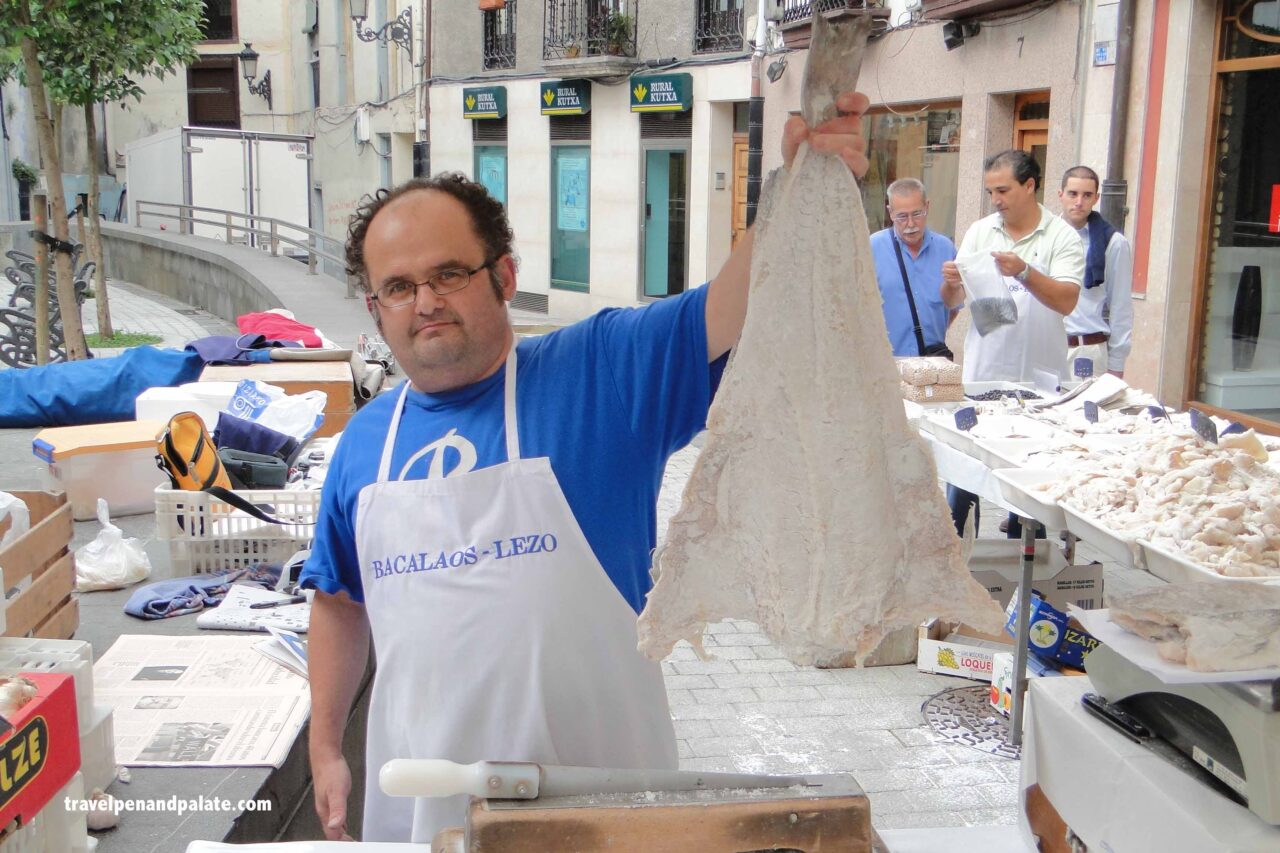
The lush, rolling valleys of the Basque Country are older than even seafood soups. For millennium the Basque culture has thrived and been known as an agriculture center. The market in Ordizia, Spain has been in continuous operation for over 800 years. The capital San Sabastian is well known as a food destination. Yet salt cod’s a “newcomer.”
Salting cod is only 500 years old and became a staple food product and cash crop for Canada’s Maritime Provinces, Northern Europe and the Caribbean Islands. The purpose of salt drying was preservation and the affordable product became a choice for long sea voyages, hot climates and incorporated into many international cuisines.
Spain and it’s New World empire especially liked salt cod. In Puerto Rico it is common to buy salt cod in wooden boxes marked with Canadian fishing port towns. Light fritters of salt cod – bacalaítos – are a favored comfort food. Traveling in Basque Country Bacalao a la Vizcaina is their codfish stew including hard-boiled eggs, capers and raisins. In France rich, elegant Brandade de Morue, a whipped spread of salt cod, olive oil, cream and potatoes is served with crusty baguettes.

Spanish/Hispanic/Basque inspired Salt Cod Stew – 6 servings
Recipe by Marc d’Entremont
Ingredients:
- 1 pound salt cod prepared 2 days ahead of cooking the stew.
- 3 cups dry garbanzo beans (also start to prepare a day ahead) or canned, drained & rinsed
- 1 large sweet onion
- 4 ribs celery
- 1 green bell pepper
- 2 scallions – green & white part.
- 6 cloves garlic
- ½ cup chopped green olives
- 2 teaspoons dried basil
- 1 teaspoon dried oregano
- ¼ cup olive oil
- ½ teaspoon salt
- ½ teaspoon ground black pepper
- 1 – 28 ounce can diced stewed tomatoes (with juice) or fresh diced
- 2 cups cold water
- 2 baking potatoes
- chopped parsley and/or cilantro for garnish
Preparation:
(important preparations two days before making the stew)
- Place the salt cod in a stainless steel or glass dish large enough to completely cover with cold water. Refrigerate the cod changing the water 2 to 3 times a day for two days.
- If using dried garbanzo beans start their preparation the same day as the cod. Cover ½ pound dried garbanzo beans with 2 quarts cold water. Cover and soak for at least 12 and up to 18 hours. Drain and rinse the beans. Place into a heavy 2-quart pot and cover with two quarts cold water. Bring to a simmer over medium high heat. Reduce heat to maintain a simmer, cover and cook for 1 hour. The water should simmer not boil or else the beans may break up. Check after one hour. The beans should be tender but not mushy. Drain and rinse. Refrigerate until ready to use.
Preparation of the stew
- Drain the cod and pat dry. Slice the cod fillets into chunks about 1 to 1-½ inch squares.
- Dice the sweet onion, celery, green pepper, scallions and garlic.
- Heat the olive oil in a heavy 4-quart pot. Add the onion and celery and sauté until the onions are translucent. Reduce the heat slightly and add the green pepper, scallions, basil and oregano. Continue cooking for 5 minutes stirring frequently.
- Increase the heat and add the salt, black pepper, chopped garlic, cod chunks, chopped green olives, the entire can of diced tomatoes and the 2 cups of cold water.
- Bring the stew to a simmer, cover and reduce the heat to maintain a simmer. Cook for 45 minutes.
- While the stew is simmering, peel and dice the potatoes. Place the diced potatoes in a bowl & cover with cold water to prevent browning until ready to use.
- After 45 minutes of simmering the stew, drain and add the diced potatoes and the prepared or canned and drained garbanzo beans.
- Return to a simmer. Taste test the stew to check for salt and add more if desired. Cover and simmer the stew for an additional 45 minutes or until the potatoes are tender.
- Ladle into bowels and sprinkle with chopped parsley/cilantro. You may spice it up with hot sauce to taste.
Quepos, Manuel Antonio National Park, Costa Rica: Hotel El Faro
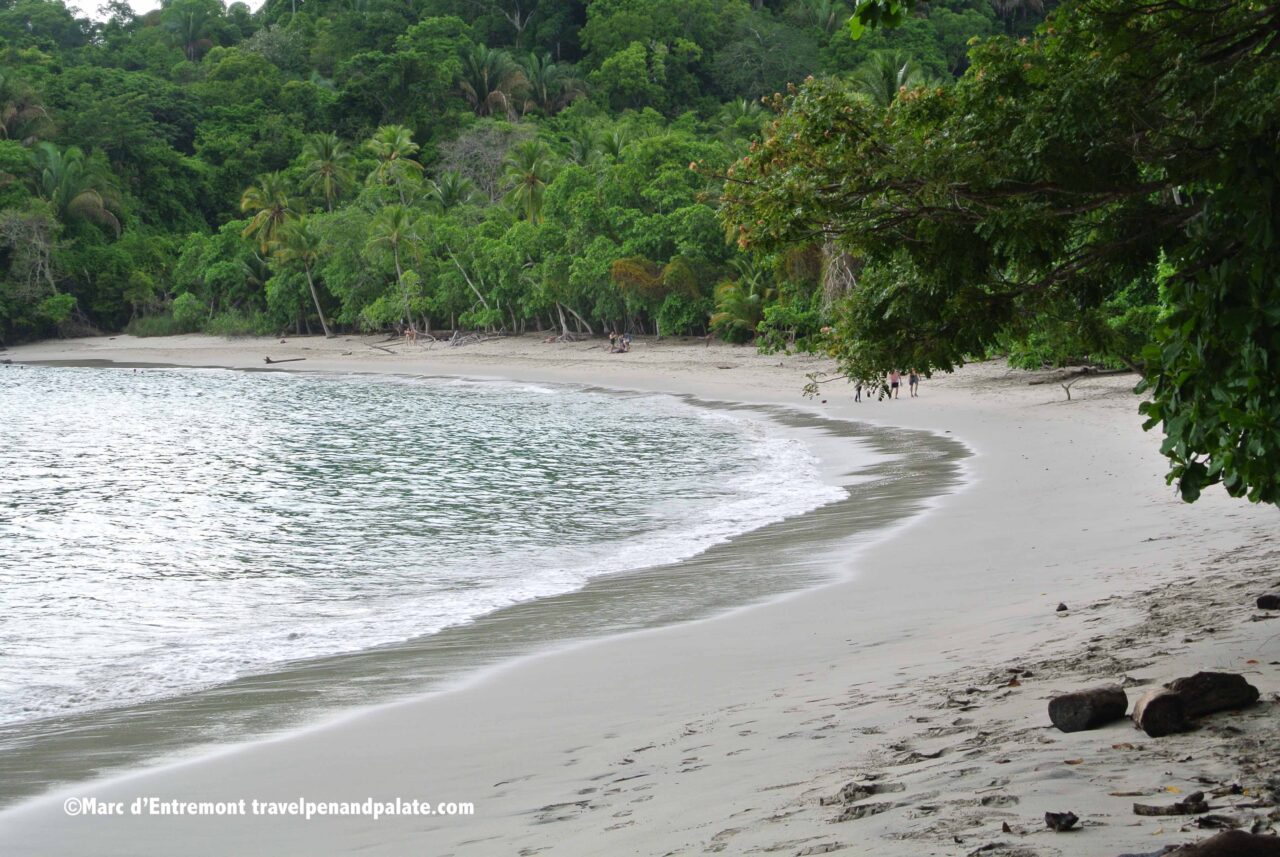
The Pacific Ocean coastline of Costa Rica is a veritable super market for some of the freshest sustainable seafood available. Costa Rica has strict laws governing commercial fishing and for sports fishing it’s catch and release only.
The Central Pacific Coast of Costa Rica has been popular with locals and expats for decades. Besides the warm water, soft beaches, the ecologically significant Manuel Antonio National Park and the shrikes of the holler monkey, Quepos is a quintessential beach town. Lush vegetation surrounds a jumble of beach houses, guesthouses, hotels, restaurants and bars.
From the waterfront the landscape rises dramatically up tropical forested hills. Up the hill is Costa Rica’s unique shipping container El Faro Beach Hotel. From every balcony is a view of the dramatic swimming pool and its namesake the El Faro (lighthouse) clearly visible on its small rock island in the harbor.
Yet it’s the restaurant that’s the El Faro’s most impressive feature. Under the talented hands of Chef Ali Garita Fonseca this open air venue at the edge of the hotel’s infinity pool is ideal. The location is perfect and the cuisine equals the view. But the Pacific Seafood Bisque was outstanding.
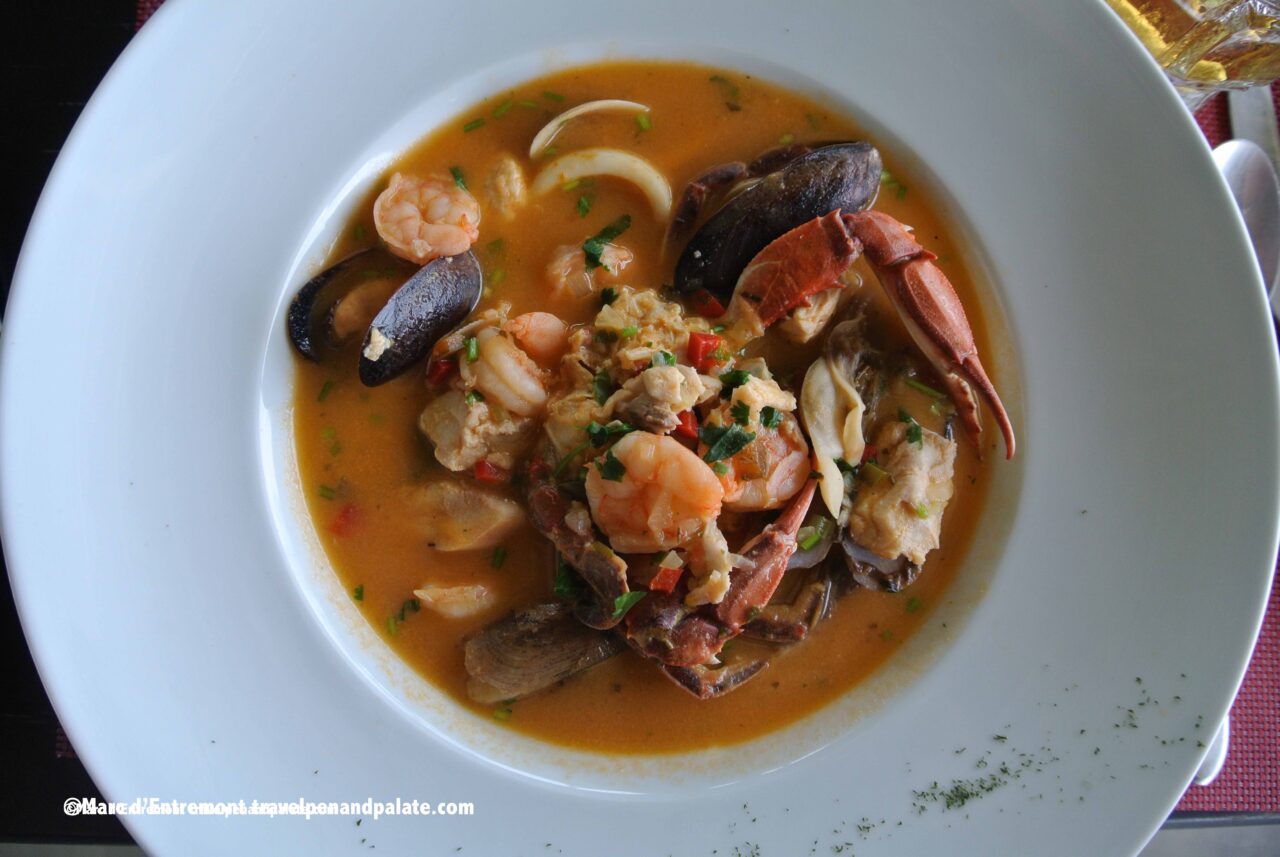
Chef Ali Garita Fonseca’s El Faro Seafood Bisque
2 servings an entrée or 4 as a first course
Although a commercial seafood stock can be used, the dish’s unique flavor is best with a home made fish stock. Since it’s best to purchase a whole small red snapper simply ask the fish monger to give you the head and tail after filleting the fish.
Ingredients for the fish stock:
- Head and tail of a filleted red snapper or corvina fish
- medium onion peeled and chopped
- 2 to 3 stalks of fresh celery
- small bunch of rinsed cilantro
- 1 to 2 chopped tomatoes
- 1 peeled carrot
- 6 cups cold water
- salt and pepper to taste
Preparation of the fish stock:
- Place all ingredients in a pot and cover with the cold water. Bring to a simmer, cover and cook for 40 to 60 minutes. Strain, preferably through cheese cloth if available, and reserve the stock. Discard the solids.
Ingredients for the bisque:
- 4 tablespoons sweet butter
- 1 large sweet bell green pepper chopped
- 1 large chopped onion
4 chopped celery stalks - 4 garlic cloves chopped
- 1/2 cup white wine
- 4 cups fish stock
2 ounces chives chopped
1 ounce of fresh chopped cilantro - 4 ounces shrimp in the shell
- 8 to 12 ounces of red snapper fillets or other firm white fish
4 ounces of cleaned clams in the shell
4 ounces of cleaned mussels.
8 ounces of lump crab meat or 16 ounces of crab legs in the shell
6 ounces of sliced octopus – tubes &/or tenticles - Salt and pepper.
Preparation:
- Melt the butter in a large soup pot. Add the peppers, onion, celery and gently cook for 5 to 8 minutes until soft but not browned.
- Add the white wine, fish stock and herbs. Bring to a gentle simmer.
- Add all the fish and seafood. Cover and gently simmer for 5 to 8 minutes or until the clams and mussels open.
- You may want to provide small bowls of steamed rice for a garnish and fresh lime slices to spritz over the bisque.
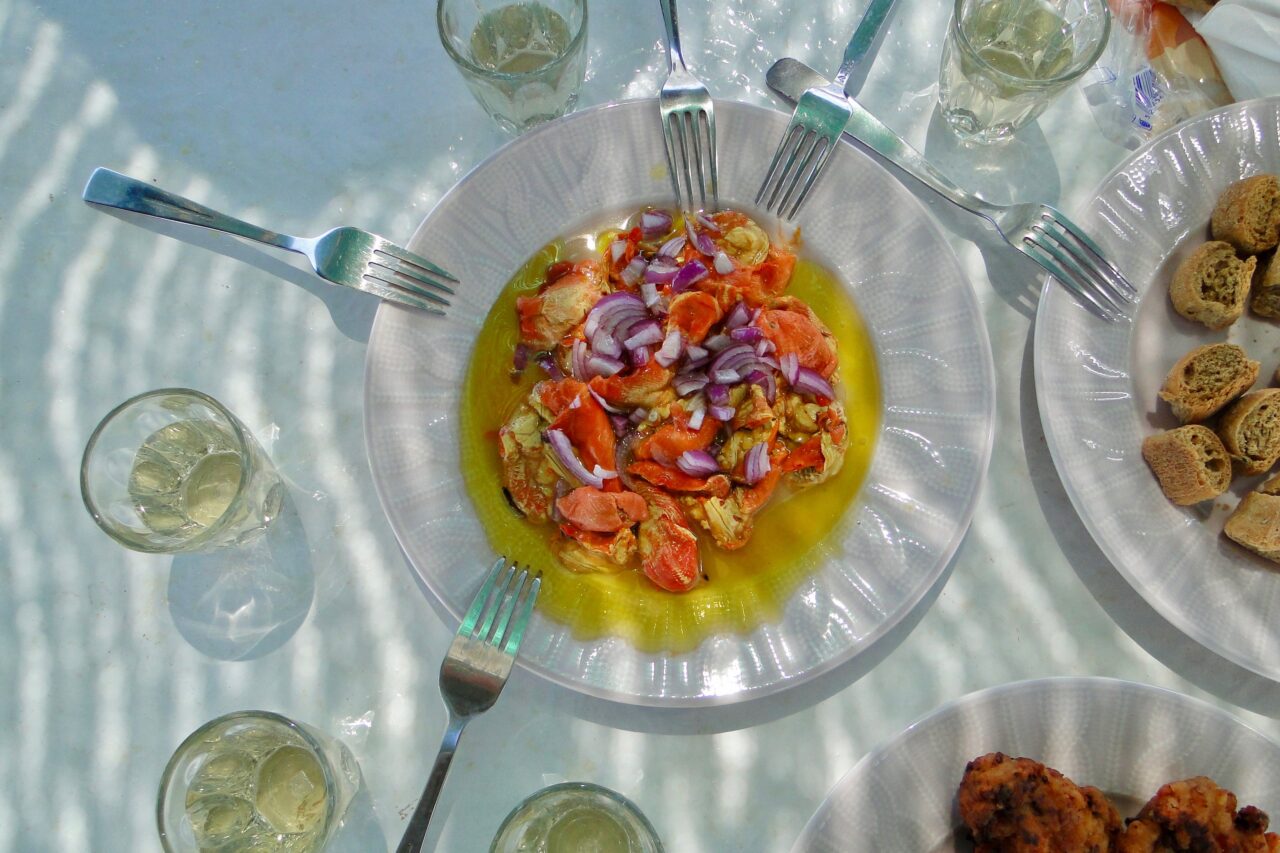
Special thanks to Sofia Bournazi, especially for taking me to Palati Restaurant more than once.
Travel with Pen and Palate to Greece and the world every month in the Hellenic News of America.




